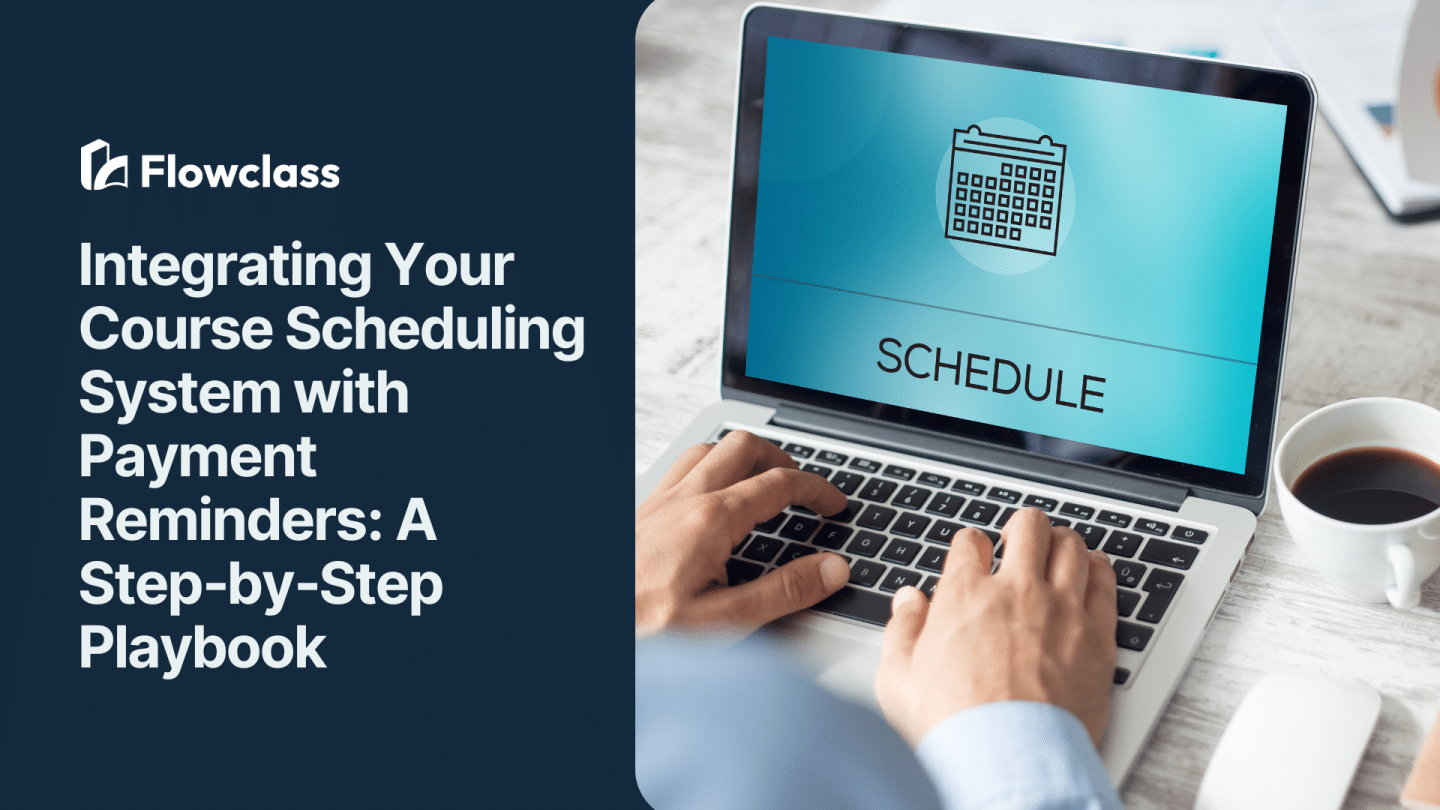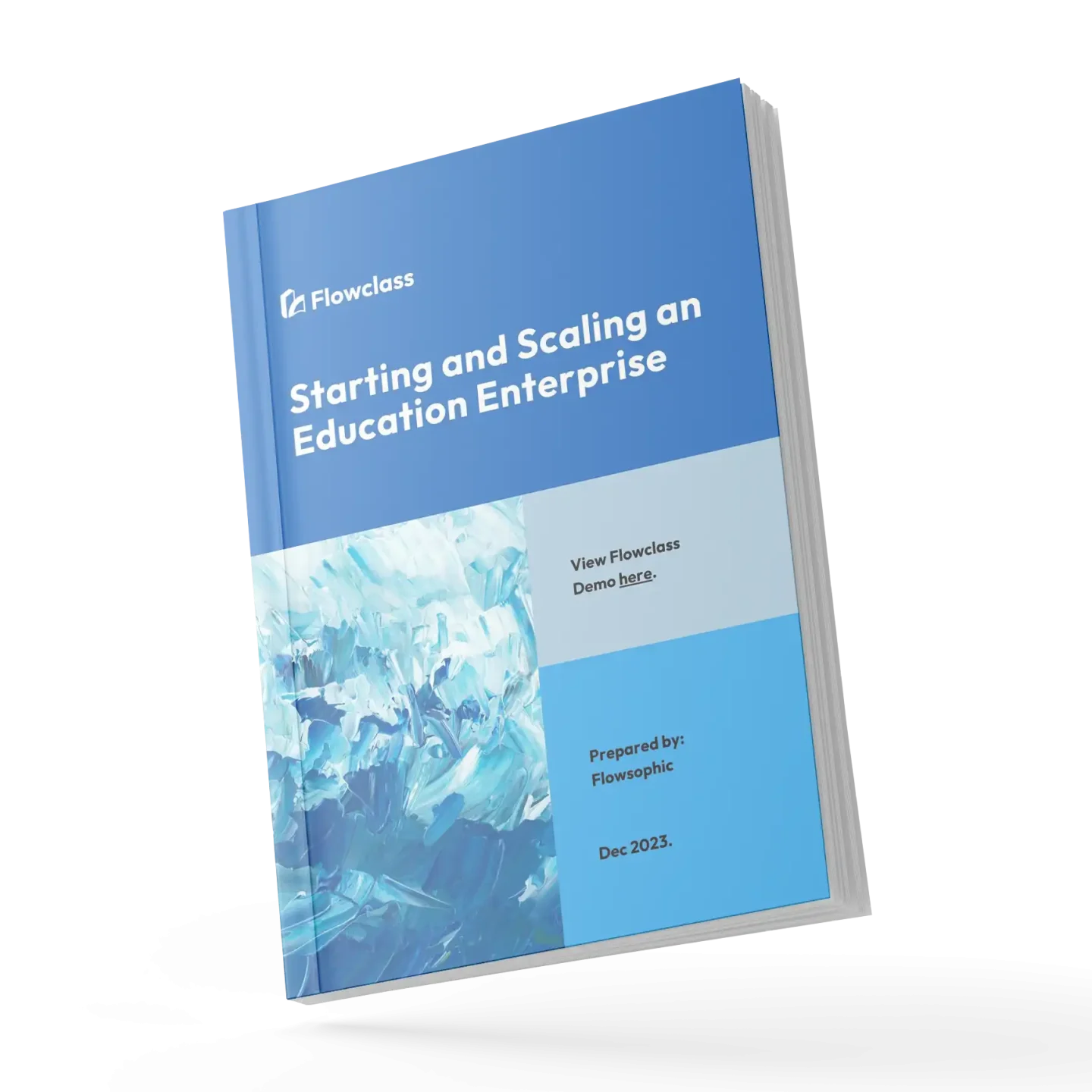In today’s fast-paced education landscape, operational efficiency isn’t a luxury it’s a necessity. Educators, school administrators, and tutoring businesses are increasingly turning to technology to streamline their workflows, reduce manual tasks, and improve cash flow. One powerful strategy involves integrating your Course Scheduling System with your payment reminder tools, creating a seamless experience for both staff and students.
This playbook offers a detailed, step-by-step guide on how to combine your scheduling and payment systems for maximum impact. By leveraging platforms like Flowclass, educational institutions can automate everything from class timetables to overdue payment reminders all while enhancing student satisfaction.

Why a Course Scheduling System Is Essential in Education
A Course Scheduling System is the backbone of any successful education business. Whether you run a university, a language center, or an online tutoring business, course scheduling can quickly become a nightmare without the right tools in place.
Here’s what a quality Course Scheduling System offers:
- Automatic class assignments based on teacher availability
- Calendar integrations for real-time updates
- Room and resource management
- Custom time slots for flexible teaching models
- Student self-enrollment with visibility into available time slots
Without a digital system, administrators often rely on spreadsheets or paper records, which are error-prone and inefficient. A digital course scheduler solves this by centralizing your timetable, improving communication, and making the scheduling process transparent and reliable.
The Impact of Delayed Payments on Education Businesses
Cash flow is one of the most pressing concerns for education providers. Late or missed payments directly affect payroll, resource planning, and expansion efforts. Unfortunately, many institutions still rely on manual follow-up through emails or phone calls to chase payments.
By integrating tuition payment software with your scheduling and CRM tools, you can automate these tasks and send overdue payment reminders without extra labor. This not only reduces friction but also improves your financial stability.
With the right setup, reminders can be triggered automatically based on class attendance, schedule proximity, or missed due dates, making them far more timely and relevant.
Step 1: Establish a Centralized Course Scheduling System
Your first task is to implement a centralized Course Scheduling System that aligns with the size and needs of your institution. Ideally, this platform should:
- Allow easy editing and drag-and-drop scheduling
- Automatically manage conflicts between classes or instructors
- Handle recurring courses and make-up sessions
- Sync with tools like Zoom or Google Calendar
For example, Flowclass offers an intuitive and fully integrated course management software that enables educators to focus on teaching rather than manual coordination. It’s also compatible with student management systems and CRM platforms, enabling real-time communication and automation.

Step 2: Link the Scheduling System with Your Student CRM
Next, connect your Course Scheduling System with a student CRM system. This integration allows you to:
- See a full view of student enrollments and class schedules
- Track communication history, attendance, and tuition payments
- Automate tasks such as welcome emails, feedback requests, and payment reminders
Flowclass, for example, integrates CRM functionality directly into its platform, reducing the need for external software. The result is a unified view of each student, enabling smarter communication and better business insights.
This connection also helps staff understand each student’s journey, allowing for targeted outreach and retention strategies based on their academic activity and payment status.
Step 3: Integrate Tuition Management Software
With your schedule and CRM in place, the next piece of the puzzle is your tuition management software. By integrating it with your Course Scheduling System, you gain:
- Real-time tuition status linked to enrolled courses
- Automated invoice generation based on course start dates
- Multi-channel payment reminders via email, SMS, or WhatsApp
- Payment failure tracking and retry automation
This level of automation ensures students never fall through the cracks and admins aren’t spending hours following up. If a student is approaching a course start date or has missed a payment, your system can alert them automatically.
You also reduce human error, such as sending reminders to the wrong student or missing out on billing for a newly scheduled course.
Step 4: Set Up Automated Payment Reminder Campaigns
Now that your systems are connected, it’s time to create a payment reminder workflow. Consider designing it as a multi-step automation with triggers based on due dates and course schedules.
Here’s a sample campaign:
- 7 Days Before Due Date: Reminder email with course summary and tuition amount
- On Due Date: Email and SMS with one-click payment link
- 3 Days Overdue: Follow-up message with late fee notice
- 7 Days Overdue: Final notice with possible enrollment suspension
Each message can reference upcoming classes from your Course Scheduling System, making them more relevant and harder to ignore. Messages should include the student’s name, the course name, and a direct payment link to simplify the process.
Automation tools in Flowclass allow you to customize these sequences for different student types (e.g., adults vs. parents of K–12 students), improving open and payment rates.
Step 5: Monitor Performance and Refine Your Workflow
Once your system is live, the real power lies in your analytics. Your student CRM and school management system should give you visibility into:
- Open and click-through rates for reminder emails
- Time between reminder and payment
- Drop-off points where students fail to follow through
- Correlation between payment reminders and class attendance
Based on this data, you can tweak the timing of reminders, test different messaging tones, or experiment with new channels like WhatsApp or in-app notifications.
By making data-driven adjustments, your payment collection process becomes more efficient and aligned with student behavior.

Benefits of System Integration for Educators and Admins
1. Streamlined Operations
Automating the flow between your Course Scheduling System, CRM, and billing tools eliminates the need for duplicate data entry and reduces errors.
2. Improved Payment Collection
Timely, personalized reminders reduce overdue balances and improve cash flow.
3. Higher Student Engagement
When students receive relevant communications tied to their learning schedules, they feel more connected and less likely to miss classes or payments.
4. Scalable Administration
As your institution grows, this integration makes it easy to handle more students without increasing staff size.
Choosing the Right Tools for Integration
To fully benefit from this workflow, choose platforms that offer:
- API or native integrations between scheduling, CRM, and billing
- Flexible automation capabilities
- Dashboards for data insights
- Support for multi-channel communications
- Custom branding and personalization options
Flowclass is a leader in education automation and offers all these features in one easy-to-use platform. It’s ideal for tutoring centers, online academies, NGOs, and traditional schools looking to modernize their administrative systems.
Conclusion: Unlock Efficiency Through Smart Integration
By combining your Course Scheduling System with payment reminders and tuition automation, you can transform the way your institution operates. This strategic integration results in:
- Faster tuition collection
- Reduced manual work
- Better student experiences
- Scalable business growth
Instead of juggling spreadsheets, emails, and payment systems, let your technology work for you. Tools like Flowclass make this possible with a powerful, all-in-one education automation solution.


